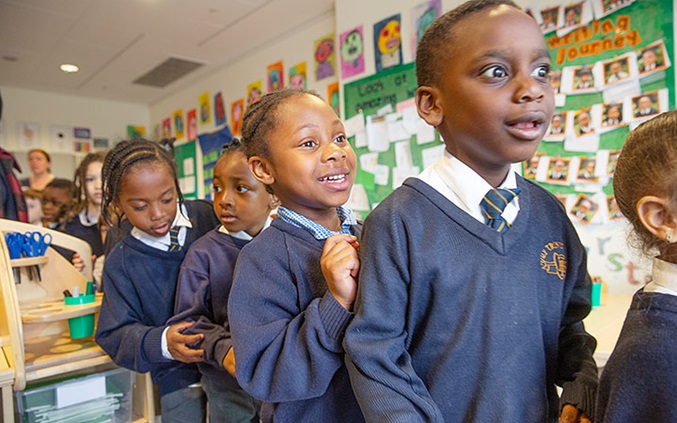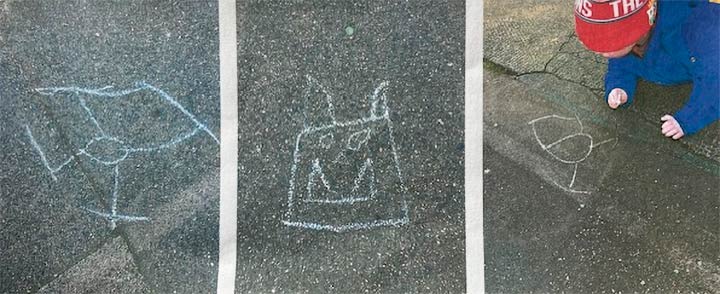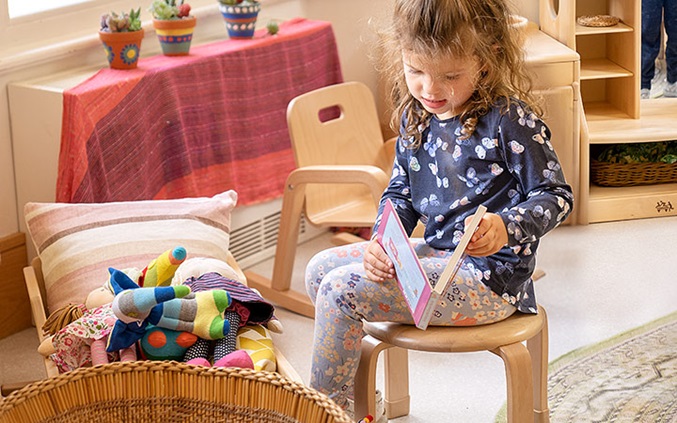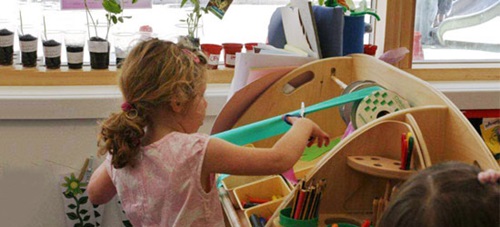Slow pedagogy
Time, pace and rhythm
| October 2023A study by Brecht Peleman et al. (2020) showed that three-year-olds in Kindergarten in Flanders spend up to 20 to 30 per cent of their time waiting. The reason for this is that teachers, feeling pressured to prepare the children for the expectations of the next academic year, focus much of their time on organising transitions to various activities like lunch or outdoor time as ‘efficiently’ as possible. As a result, much of their time and of the children’s time is spent on organising the transition times to lunch, to outdoors, or to other activities, and the group must wait until the last child is ready (Vandenbroeck, 2020, in Clark, 2023).
Many people will share the feeling that the daily experience of young children in early childhood and care environments can be hurried and full. Professor Alison Clark suggests that childhood today is ‘accelerated’, and through her extensive research, she invites practitioners to consider an alternative approach, Slow Pedagogy. This way offers children the ‘time, pace and rhythm’ for their play and their lived experiences. A Slow Pedagogical approach can greatly benefit both the child and the practitioners.
External pressures can make it difficult for educators to prioritise what’s best for children over what is expected of them, as shown in the opening quote. As part of the Contesting Early Childhood series, Alison has written an excellent book, Slow Knowledge and the Unhurried Child: Time for Slow Pedagogies in Early Education, which exposes some of the challenges practitioners can face today.
As someone who follows Froebelian principles, I find myself in agreement with Alison Clark's Slow Pedagogy approach. A key principle of Froebel is recognising early childhood as its own distinct period, which means valuing and celebrating a child's experiences in the present moment without rushing them towards the next activity or experience. Froebel believed that learning through hands-on experience was more effective than simply learning through verbal communication of ideas. Children require time to develop their ideas, and practitioners play an important role in supporting and guiding them through sensitive and encouraging dialogue. For Froebel, a practitioner's role was critical in promoting "freedom with guidance" for young children. This approach involves the adult observing, supporting, and extending a child's learning through thoughtful attunement. It is not a laissez-faire approach but rather an active one where the practitioner provides the child with the time, space, and understanding they need while being perceptive, considerate, knowledgeable, and nurturing.
The following lived story was recorded over several days. I share it with you to show how the practitioner used their knowledge of the child, sensitively moving in to offer guidance when they thought it was the right time to do so:
Dear David,
Today as you arrived at nursery, you quite quickly made your way to the outdoor workshop area. You gathered lots of paper and then folded it together. It appeared that you were quite keen to be alone. But when other children showed their interest in what you were doing, as they often do, you welcomed them. I was available to answer questions or chat, but you seemed confident and determined.
As I observed, it looked as if you were making a book. You made your ‘book’ secure by cutting and tying string to hold the pages together. You seemed to test it, by pulling the pages to check they were where you wanted them to be. All the while, other children had come to observe what you were doing, and then two other children (Peter and Sophie) began making their own books. Once you were happy with your ‘book’, you picked up a green pen and began ‘writing’ signs and marks on each page. You carefully wrote from left to right. When you had completed your book, you looked at it, turning each page thoughtfully. After checking the content, you picked up your pencil and added a little more to one page. When it was complete, you began reading out your writing to the observing children, who all listened very attentively to what you had written.
David, over several days, you have shown an interest in symbols. Some weeks ago, you were playing with stones, and you realised that you could scratch marks on the paving slabs. You seemed to enjoy this, taking a lot of time and using your whole body to express yourself. You returned to this activity over the next two days to add more marks to the previous ones. You seemed very interested in a kind of ‘wobbly cross’ and drew this everywhere, sometimes scratching with stone, sometimes with chalk on the ground, or on bits of wood, sometimes on the outdoor chalkboard. As your play developed, you would collect large bits of paper or card (from cardboard boxes) and draw the same symbol on them. You showed your proficiency in cutting out paper. You progressed to collecting masking tape and sticking your ‘notices’ up all around the garden. You began exploring different tools, e.g., felt-tip pens or thick pencils. You also began writing ‘D’ for David. You came to me to ask me to write your name, and then you added other letters that you had knowledge of, ‘M’, ‘L’ and ‘S’ which were all the letters of names familiar to you. You also asked me to write ‘Stop’, and then you copied it out.
David, over several weeks I have been so excited by your fascination with symbols. What you were able to demonstrate was that symbol-making/writing is important to you. It can be a difficult skill to learn and master, but through my observations, I came to understand that what you needed most of all was time. With that time and with rich resources and opportunities your interest in symbols developed into writing that was meaningful to you.
I really enjoyed observing your writing progress, David, and I look forward to seeing how this develops further over time.
Love Alison
In the lived story above, Alison closely observed David, ready to engage but not to overpower. Additionally, David had the opportunity to revisit his mark-making on the paving slabs, as his symbols were not hosed away, but were left, respectfully, for his return. There is also a sense of David having ‘unhurried’ time, creating his book over a lengthy period. He was not dragged away to attend a nursery routine. Alison was able to tune in and respond to David’s interests, and through time he developed and mastered his skill. “Thinking about ‘slow’ is not intended to add new burdens to an already overstretched and pressured sector but to encourage a culture where slower practices are supported and celebrated for the differences they can make to the everyday lives of young children and those who work with them” (Clark, 2022).
References:
Bruce, T. (2021) Friedrich Froebel A Critical Introduction to Key Themes and Debates London: Bloomsbury
Clark, A. (2023) Slow Knowledge and the Unhurried Child: Time for Slow Pedagogies in Early Childhood Education. Oxon and New York: Routledge.
Clark, A. (2022) Taking Time Back. Available from: https://www.nurseryworld.co.uk/opinion/article/taking-time-back [Accessed 18 July 2023].
Peleman, B., Van Avermaet, P., and Vanderbroeck, M. (2020) Early learning opportunities for children at risk of social exclusion. Opening the black box of preschool practice. European Early Childhood Education Research Journal. 28, pp. 21-42.
Vandenbroeck, M. (2017) Introduction: Constructions of truth in early childhood education. In: M. Vandenbroeck, ed. Constructions of neuroscience in early childhood education. London: Routledge.








